
How to Use Adafruit 8x16 LED Matrix FeatherWing - Pure Green: Examples, Pinouts, and Specs
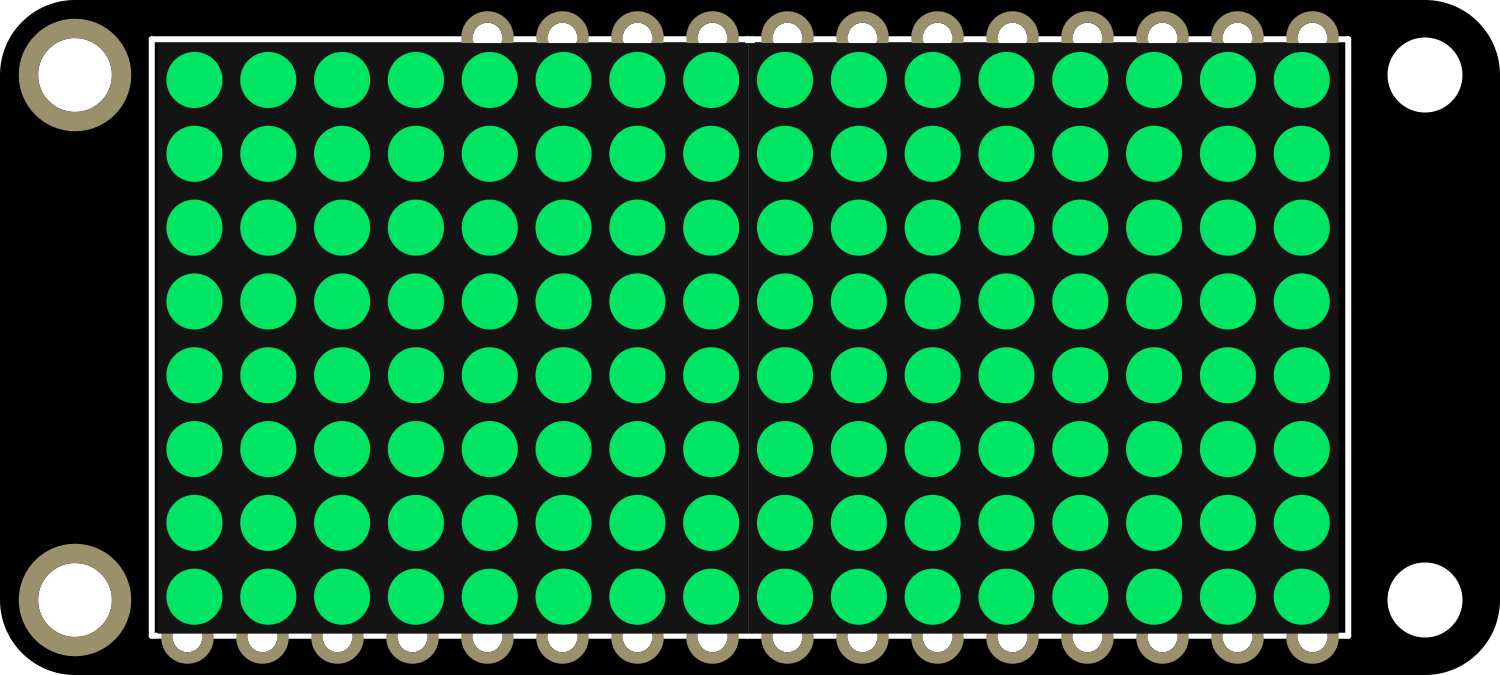
 Design with Adafruit 8x16 LED Matrix FeatherWing - Pure Green in Cirkit Designer
Design with Adafruit 8x16 LED Matrix FeatherWing - Pure Green in Cirkit DesignerIntroduction
The Adafruit 8x16 LED Matrix FeatherWing in Pure Green is a versatile and compact electronic component designed to interface with the Adafruit Feather series of development boards. This LED matrix provides a grid of 8x16 (128) bright green LEDs, ideal for displaying scrolling text, animations, and simple graphics. It is perfect for wearable projects, badges, or any application where a small yet visible display is needed.
Explore Projects Built with Adafruit 8x16 LED Matrix FeatherWing - Pure Green
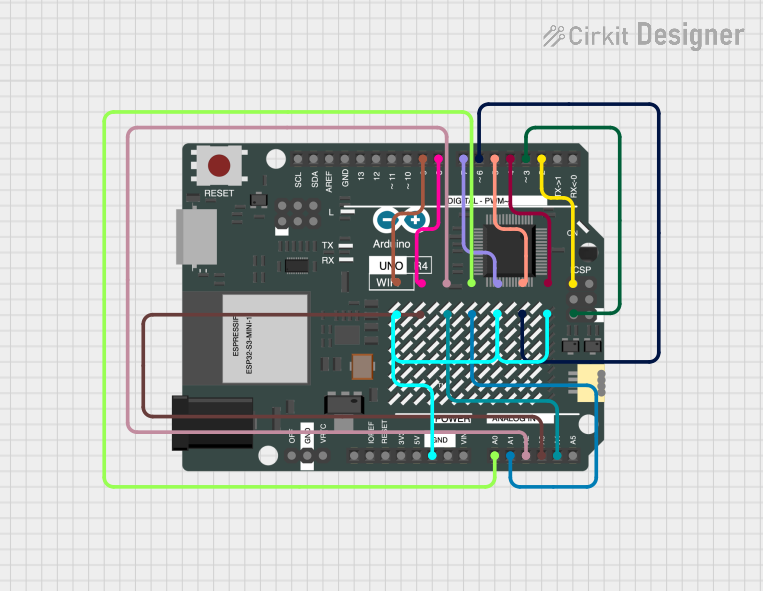
 Open Project in Cirkit Designer
Open Project in Cirkit Designer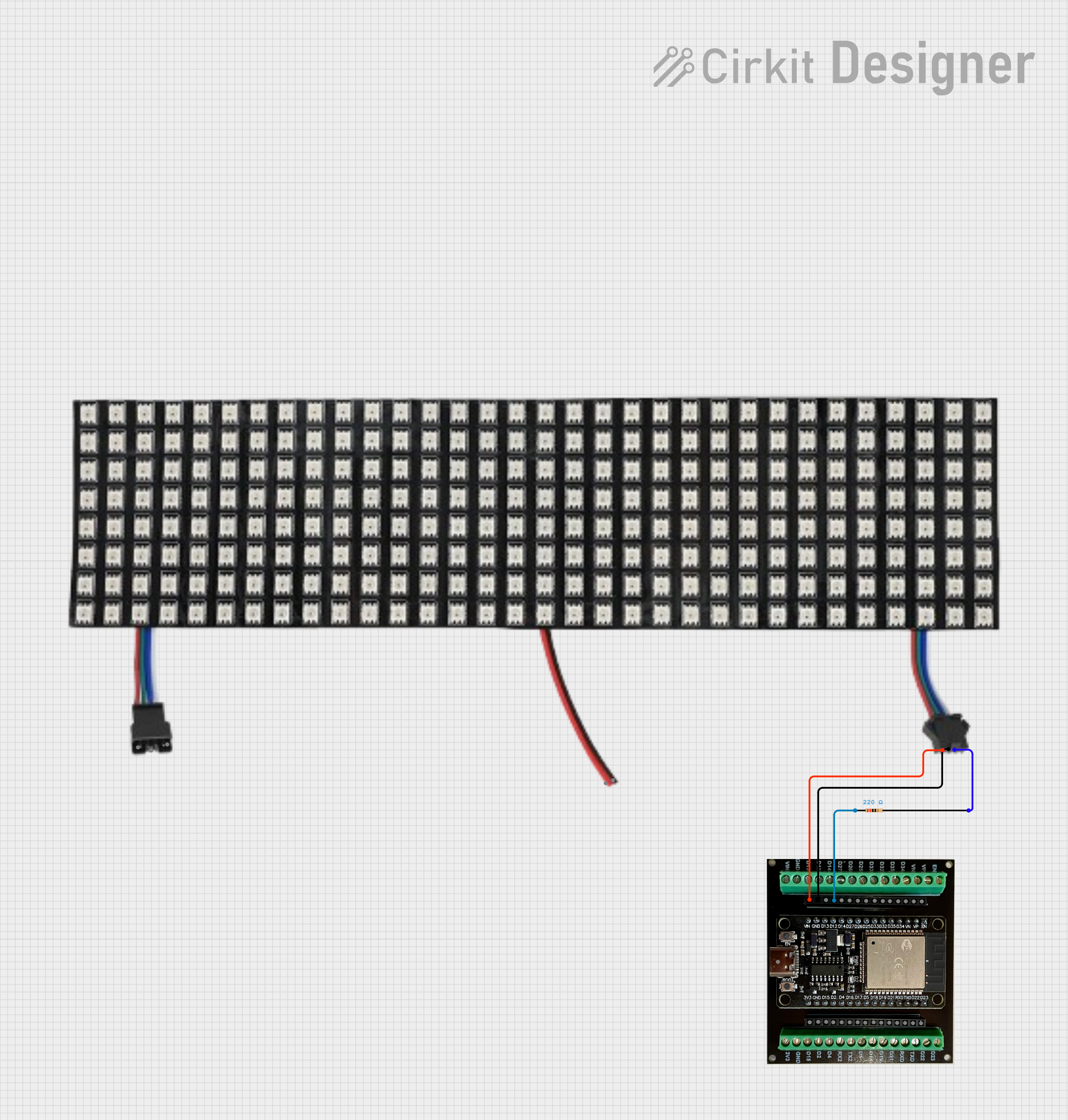
 Open Project in Cirkit Designer
Open Project in Cirkit Designer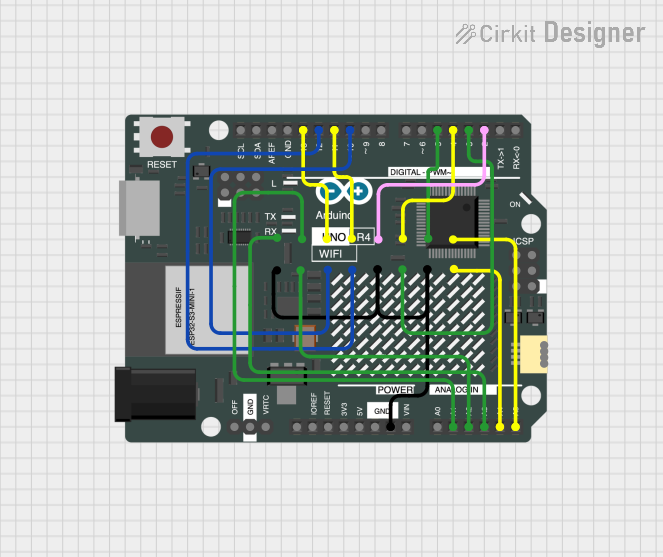
 Open Project in Cirkit Designer
Open Project in Cirkit Designer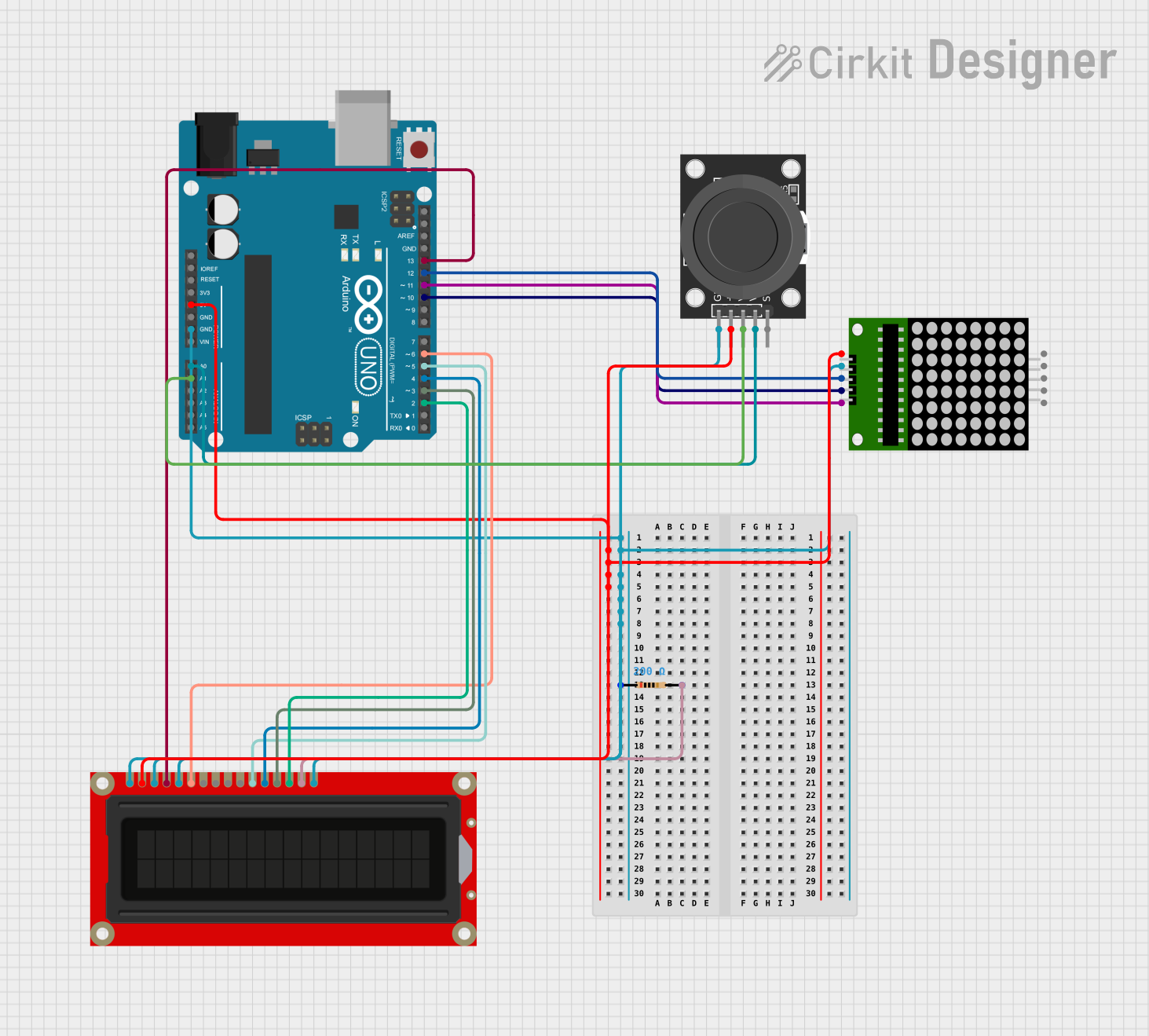
 Open Project in Cirkit Designer
Open Project in Cirkit DesignerExplore Projects Built with Adafruit 8x16 LED Matrix FeatherWing - Pure Green

 Open Project in Cirkit Designer
Open Project in Cirkit Designer
 Open Project in Cirkit Designer
Open Project in Cirkit Designer
 Open Project in Cirkit Designer
Open Project in Cirkit Designer
 Open Project in Cirkit Designer
Open Project in Cirkit DesignerCommon Applications and Use Cases
- Wearable electronics
- Name badges and signage
- Data visualization
- User interfaces for compact devices
- Educational projects and learning platforms
Technical Specifications
Key Technical Details
- LED Color: Pure Green
- Matrix Size: 8x16 LEDs
- Operating Voltage: 3.3V to 5V DC
- Communication Interface: I2C
- I2C Addresses: 0x70 (default), selectable with solder jumpers
Pin Configuration and Descriptions
| Pin | Description |
|---|---|
| GND | Ground connection |
| 3V | 3.3V power supply |
| SDA | I2C data line |
| SCL | I2C clock line |
| RST | Reset pin (optional use) |
| A0 | Address selection pin 0 |
| A1 | Address selection pin 1 |
| A2 | Address selection pin 2 |
| A3 | Address selection pin 3 |
| A4 | Address selection pin 4 |
| A5 | Address selection pin 5 |
Usage Instructions
How to Use the Component in a Circuit
- Powering the Matrix: Connect the 3V and GND pins to the corresponding power supply pins on your Feather board.
- I2C Communication: Connect the SDA and SCL pins to the I2C data and clock lines on your Feather board.
- Address Selection: If using multiple LED matrices, solder the address selection pins (A0-A5) to set unique I2C addresses for each matrix.
- Software Initialization: Use the Adafruit LED Backpack library to control the matrix via I2C.
Important Considerations and Best Practices
- Ensure that the power supply is within the operating voltage range.
- When daisy-chaining multiple matrices, calculate the total current draw to avoid overloading the power supply.
- Use pull-up resistors on the I2C lines if they are not included on the Feather board.
- Avoid exposing the matrix to mechanical stress or moisture.
Example Code for Arduino UNO
#include <Wire.h>
#include <Adafruit_GFX.h>
#include <Adafruit_LEDBackpack.h>
Adafruit_8x16matrix matrix = Adafruit_8x16matrix();
void setup() {
matrix.begin(0x70); // Initialize the matrix with its I2C address
matrix.setBrightness(10); // Set brightness level (0 is dim, 15 is bright)
}
void loop() {
matrix.clear(); // Clear the matrix display
matrix.setCursor(0, 0); // Set cursor at top-left corner
matrix.print("Hello"); // Print a message
matrix.writeDisplay(); // Update the display with the new data
delay(2000); // Wait for 2 seconds
}
Troubleshooting and FAQs
Common Issues
- LEDs Not Lighting Up: Ensure that the matrix is properly powered and that the I2C lines are correctly connected.
- Garbled Display: Check for correct I2C address and ensure there are no conflicts with other I2C devices.
- Dim Display: Adjust the brightness setting in your code or check the power supply voltage.
Solutions and Tips for Troubleshooting
- Double-check wiring connections and solder joints for any loose connections or shorts.
- Use the
i2cdetectutility or similar tools to confirm the matrix's I2C address. - If using multiple matrices, ensure that each has a unique I2C address.
FAQs
Q: Can I use this matrix with a 5V system? A: Yes, the matrix can operate on a 3.3V to 5V power supply.
Q: How do I change the I2C address? A: Solder the address selection pins (A0-A5) to set a unique address for each matrix.
Q: Can I chain multiple matrices together? A: Yes, you can chain multiple matrices by connecting their I2C lines together and setting unique addresses for each.
Q: Is there a library available for controlling the matrix? A: Yes, the Adafruit LED Backpack library is available for easy control of the matrix.
For further assistance, consult the Adafruit forums or the detailed product guide available on the Adafruit website.